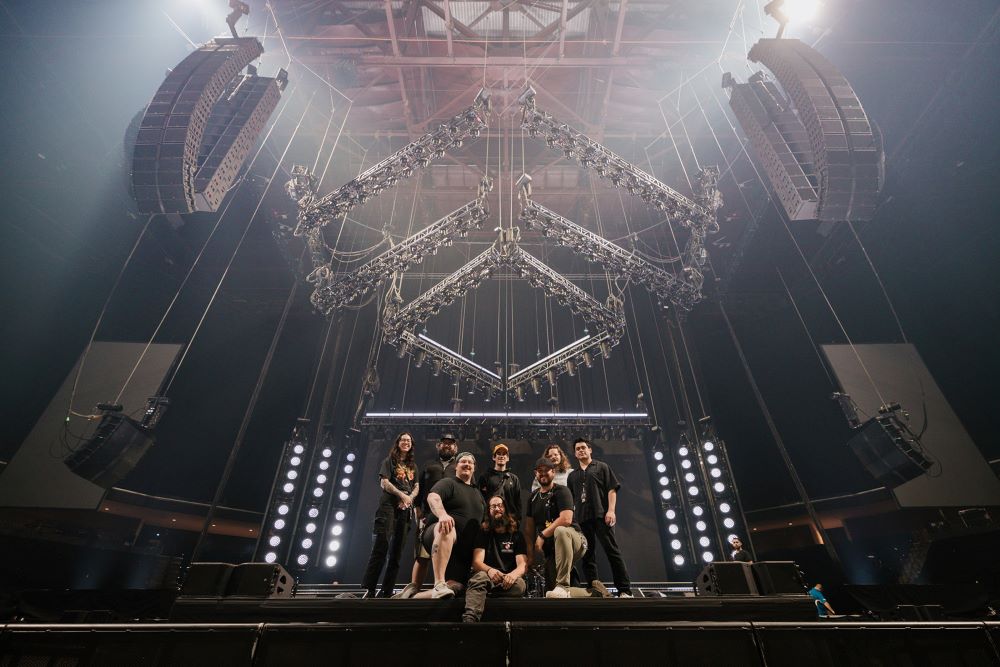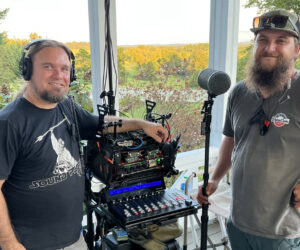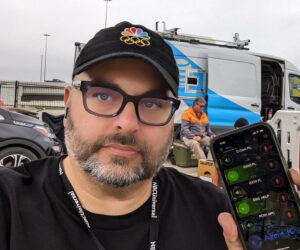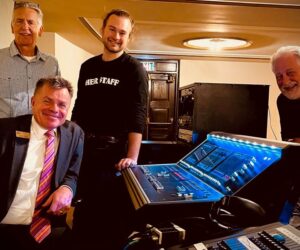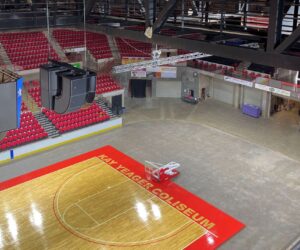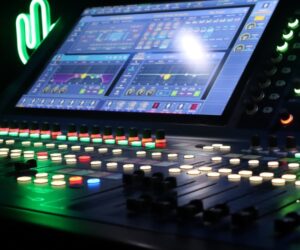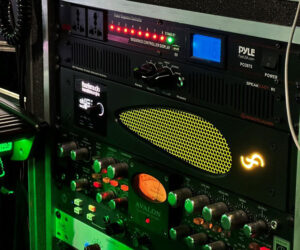Hip-hop artist Nate Feuerstein, known as NF and currently out on the HOPE Tour of North America, Europe and UK this year, is being supported by a PRG-supplied sound reinforcement system headed by L-Acoustics K1/K2 and supporting components joined by DiGiCo SD5 consoles for front of house engineer Travis Stoker and monitor engineer Murphy Johnson.
“The biggest thing for me with the SD5 is that the amount of programming you can do on these consoles is incredible,” says Stoker, who also served as the designer of the HOPE Tour’s L-Acoustics PA system. He quickly reels off a litany of nightly production accomplishments with the console: “With the SD5, we’re using timecode to recall snapshots; we use lots of macros on these desks to be able to control various features; we have lots of redundancy built in since it is a very track-heavy show; and we have analog fallback from our playback system and for other aspects of our system where we can just hit a macro and it’s instantaneously switching over to a different set of source inputs for certain channels.
“Along with being able to route things however I really need to, I’m not stuck in a box of ‘I have to route the system this way because this is how the system works,’ as you do with certain other desks. They have very specific ways of doing things, but with DiGiCo, you can put your own spin on how you set your files up down to the routing and console layout. So that’s been a very important part for me, especially with the outboard gear that I’m carrying. So I’m not limited to a certain amount of insert points. It gives me a lot of flexibility with file setup.”

Meanwhile, the base main system design for the tour is 14 K1 over four K2 downs per side, each backed by a dozen flown KS28 subwoofers. Left and right hangs of 16 K2 are deployed as outfills, and these can be augmented with two more identical arrays to bring the system to a full 270-degree configuration when the arena seating layout calls for it.
Twelve additional KS28 subs are ground-stacked to bolster the concert’s low-end reinforcement, and the full rig is powered by 66 LA12X amplified controllers. The system’s design also calls for two L-Acoustics P1 processors, which are fed from the console’s main left/right and sub left/right outputs for system processing before routing out to the amps via Milan AVB, giving the entire setup an unprecedented amount of control.
“No matter what the venue calls for, K Series can match the need,” says Will Foley, systems engineer for the tour and for PRG, adding that rap performances typically need plenty of low-frequency extension, what Foley calls “the beef” of a hip-hop show. He says the combined deployment of KS28 subs, both flown and ground-stacked, arrayed in a delay arc, are giving the HOPE Tour the punch the music demands.
“What the subs are giving us is a lot of impact, but also very even and consistent low-end coverage, front to back, high and low, up to the 200 and 300 seat levels,” he says, noting that the Panflex directivity feature of K2 helps achieve that for the sidefills. “At the same time, we’ve tuned the system for a high degree of intelligibility, which NF’s music really needs. So we’re getting very clear, articulate sound across the entire spectrum with no loss of punch, and we’re getting that to every seat, thanks to the Soundvision software that I use to lay out every show. I’m able to draw these venues pretty quickly and get very good results every time, and that’s all I can really ask for.”
Foley has one other major demand on the system: that it be scalable, able to accommodate the specific interior geometry of each venue. Scaling a system can be tricky, he says, because of the change in relationships between different frequency ranges. “For instance, your midrange can change a lot,” he notes. “The large number of subs we’re deploying means we will always have great low-end impact, but we use two P1 processors at Front-of-House, linked via Milan AVB with an analog fallback, to fine-tune the mids and the high end when we scale the system. I’ve been extremely happy with the results of that.”
Johnson explains that the monitors on the tour are simultaneously “straightforward and complicated,” with IEMs, wedges, sidefills, and subs for the artists. He’s also managing a 30-plus-input drum riser as well as the 25 channels of playback tracks. “The way the SD5 lets me organize and program all of that is what sets it apart for me,” he says. “Wedges, IEMs, and side-fills together can be tricky, but I always know where everything is when it’s needed.”
Stoker also cites the benefits of having both the FOH and monitor consoles on the same Optocore loop: “It’s been really helpful because our playback comes in digitally via MADI through an Optocore DD4MR on the loop, and the SD5 lets us keep our signal digital all the way to the amps via AES, and then AVB through the L-Acoustics P1 processor,” he explains. The only conversions that take place for playback are really at the outboard gear, between the preamps, and the line-out cards that are handling the I/O for outboard gear.”
In addition, he points to the 32-bit Stadius pre-amp cards as “utterly transparent. The conversion times are very low, and that’s keeping our latency down as well. Especially with the amount of stage volume that’s coming off the stage, it helps keeping the front-of-house PA from tearing with the energy that is on stage. There’s a lot of powerful sound on this tour, but the SD5s give us the tools we need to manage it.”


